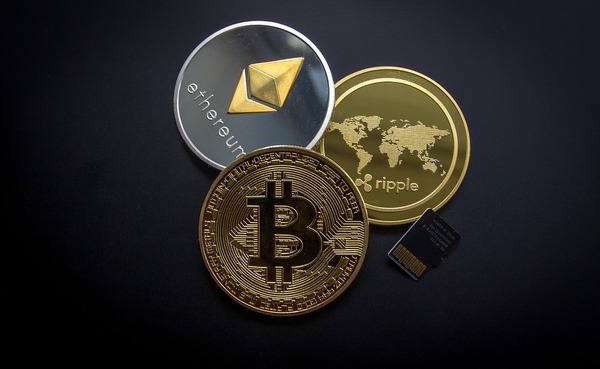
One of the most important aspects of launching an initial coin offering or a security token offering is to ensure that your token will be listed on as many leading exchanges as possible to increase your potential investors base.
In this guide, you will learn how to get your digital token listed at a leading digital asset exchange and how much it will cost you to do that.
Why List Your Token on a Major Digital Asset Exchange?
The majority of ICO tokens – especially those issued on the Ethereum blockchain – can be traded on decentralized exchanges and directly on a peer-to-peer basis. So, why are blockchain startups so keen to get their tokens listed on large exchanges? The short answer is liquidity.
Generally speaking, the more liquidity there is in a digital currency or token, the more likely investors are to invest in it. If it is not possible to enter into and exit large positions in a digital token, well-heeled investors will avoid buying it. That means the ICO token would have to rely exclusively on small investors to buy and trade it, which means it will likely struggle to perform given the increasing competitiveness of the digital asset market.
Oliver Bussmann, former CIO of UBS and head of Swiss fintech advisory firm, Bussmann Advisory, told Business Insider:
“If you prepare for an ICO, you have to prepare for a listing. It’s important to get access to liquidity. That means the bigger the exchange is, the more effort and also more cost to get listed. If you don’t get access to certain exchanges, then it’s tier two exchanges, which means access to investors is limited.”
Large, reputable digital asset exchanges (ideally with fiat currency onramps) are, therefore, of key importance for startups to list their tokens if they want to increase their chances of seeing the value of their digital token increase over time.
Additionally, securing a listing on a leading digital asset exchange will increase a project and its token’s brand awareness and reputation, which, in turn, could lead to more buying. For utility tokens, this is particularly important as they need to retain their value or, at least, remain relatively price stable to function adequately within the network they are powering.
General Requirements for Exchange Listings
Before contacting exchanges to get your digital token listed, it is important that you meet the general requirements for a listing. These include:
- An innovative, original project
- A whitepaper that details all important aspects of your project
- High quality, audited code
- Passing the Howey Test (as most exchanges will not list anything that looks like a security)
- Details about project owners and ownership structure
Once you have compiled the basic necessities for a listing, you need to check the individual listing requirements at the exchanges where you would like your token to be listed.
The Application Process
As you would expect in the heterogeneous world of digital assets, the application process to have a newly-issued digital token listed differs somewhat from exchange to exchange.
The most common applications process, however, involves filling out an online application (usually in the form of a Google Doc) that requires blockchain startups and/or digital currency projects to provide the following information:
- Project name
- Official website
- Description of the project
- Names and contact details of company owners
- Details about the company’s ownership structure
- Link to whitepaper
- Link to BitcoinTalk forum announcement page and social media channels
- The blockchain on which the project is built
- Link to its smart contract (if applicable)
- Details about the project’s token economics and supply management
- Details about the token sale and token type
- Any legal documents or terms and conditions about the project or token
- Additional information
Some exchanges do not accept applications and list digital currencies and tokens according to their own internal listing criteria. San Francisco-based Kraken, for example, does not charge a listing fee and adds new assets based on a thorough evaluation process.
Alternatively, some exchanges, such as Huobi Global and CoinDeal, let its users vote on which digital assets to add next. For blockchain projects with large communities, these exchanges provide an interesting (and free) opportunity to score an exchange listing.
Listing Fees Can Range From $50,000 to $1,000,000+
While a handful of exchanges do not charge blockchain ventures to list their tokens, the reality is that listing fees are big business for digital currency exchanges, which is why the majority of listings will cost you.
According to a report by research firm Autonomous Next, traditional equity exchanges such as Nasdaq charge public companies between $125,000 and $300,000 to have their stocks listed plus an annual fee between $100,000 to $500,000 to remain listed. Conversely, an investigation by Business Insider has revealed that listing a newly issued ICO token on a reputable digital asset exchange can cost up to $1,000,000 while Bitcoin Market Journal reported in September 2018 that an exchange listing could cost up to $2.5 million.
According to information received by Bitcoin Market Journal, listing fees for small exchanges range from as little as $6,000 to as much as $30,000. Mid-sized exchanges, on the other hand, will charge you between $60,000 and $300,000 depending on the exchange. Finally, top tier exchanges that charge a listing fee may ask for anything between $1,000,000 to $2,500,000.
While these fees may seem astronomical, it is important to note that these figures stem largely from the ICO boom of 2017 when exchanges were able to effectively charge whatever they wanted. Moreover, according to industry experts, these figures are not set in stone and there is room for negotiation.
If you want Media Shower to help you with your blockchain marketing campaign, contact us today.